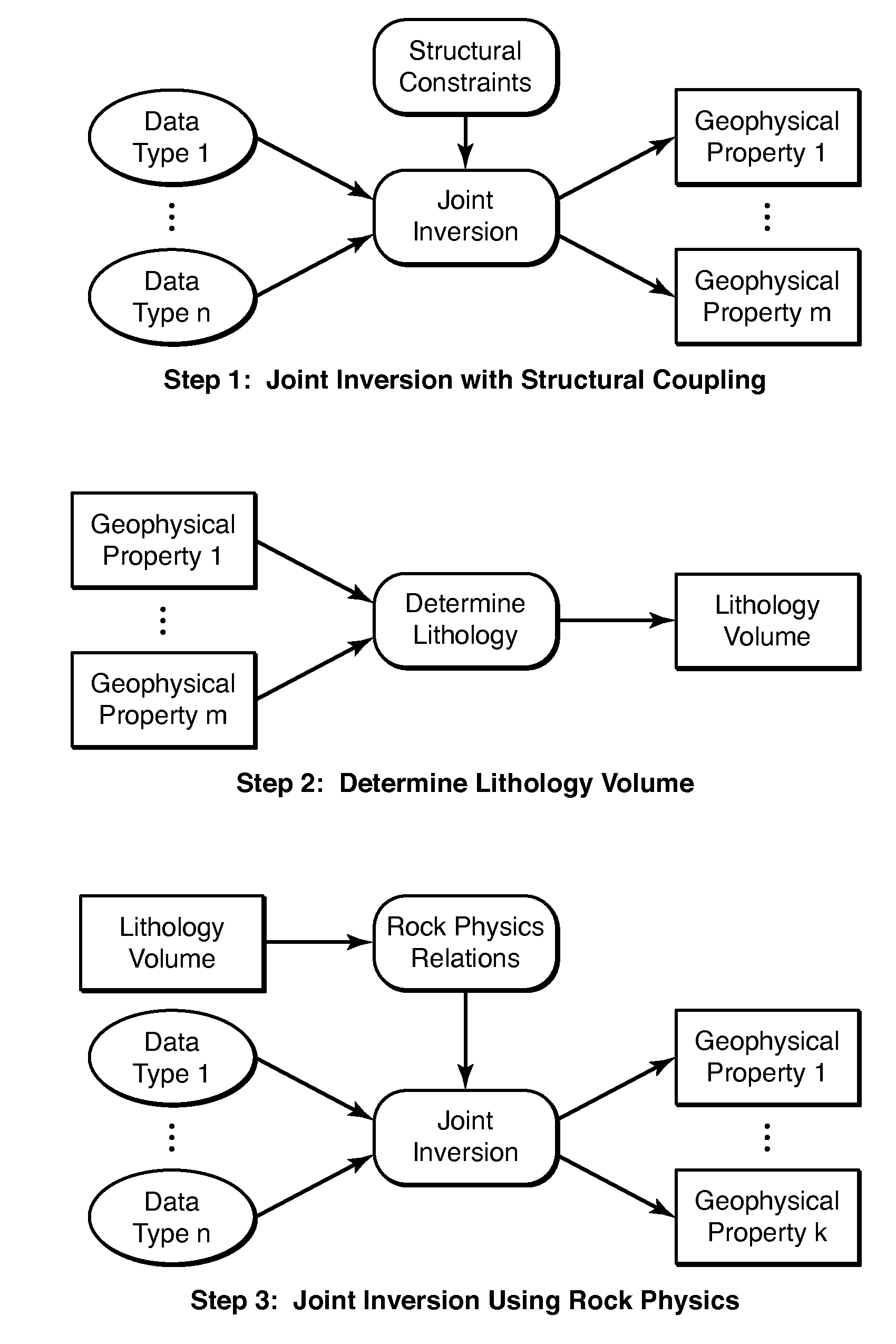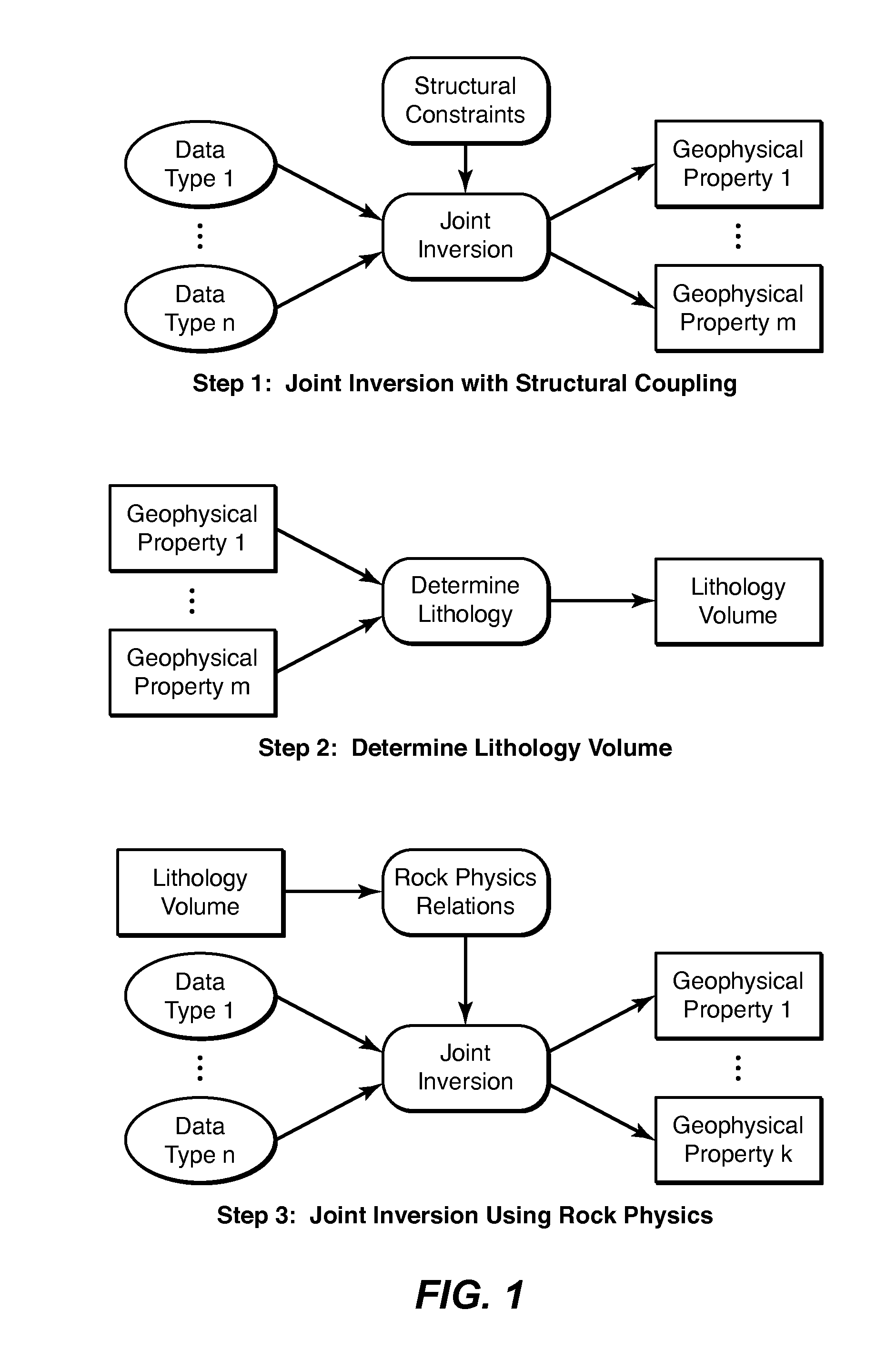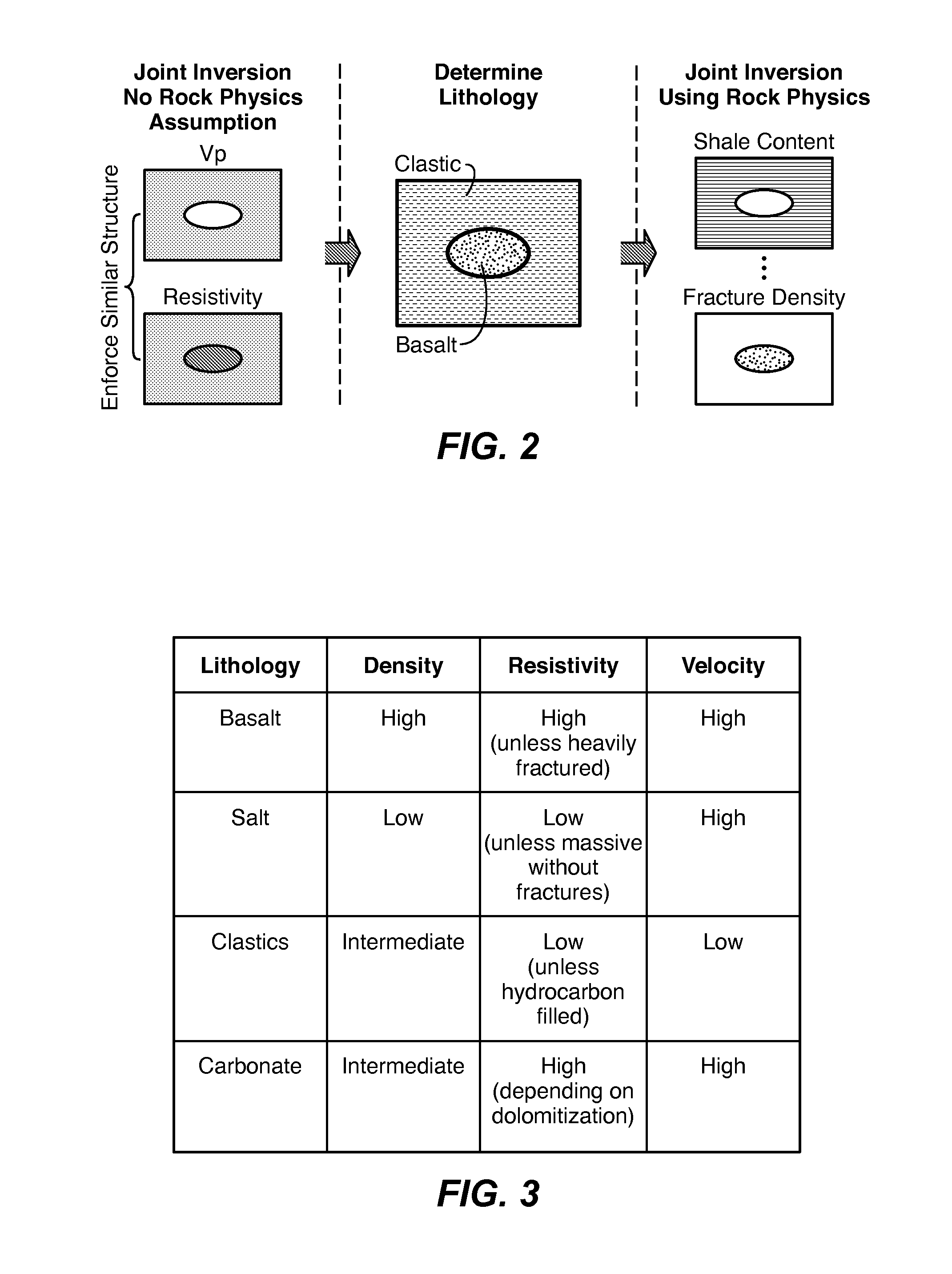Joint Inversion with Unknown Lithology
a technology of unknown lithology and inversion, applied in the field of joint inversion with unknown lithology, can solve the problems of high nonlinearity, difficult inversion, failure of inversion,
- Summary
- Abstract
- Description
- Claims
- Application Information
AI Technical Summary
Benefits of technology
Problems solved by technology
Method used
Image
Examples
Embodiment Construction
[0029]This invention is a method for a rock physics based joint inversion of geophysical data for subsurface properties in cases where the lithology class—also referred to as rock type or facies—is not known beforehand. This is done in a workflow (FIGS. 1 and 2), in which the coupling strategies may change at each step. FIG. 1 is a flowchart showing basic steps in one embodiment of the present inventive method.
[0030]In step 1, a structural coupling method, for example Haber and Oldenburg (1997), is used to jointly invert the geophysical data of at least two data types. In structural coupling the sole assumption is that the inverted geophysical properties, for example sonic velocity and conductivity, have structural similarity, i.e. boundaries and changes in the properties are co-located (“structural constraints”). The result of a joint inversion using structural coupling is geophysical properties, e.g. sonic velocity, density, conductivity. The term structural coupling is used herei...
PUM
 Login to View More
Login to View More Abstract
Description
Claims
Application Information
 Login to View More
Login to View More - R&D
- Intellectual Property
- Life Sciences
- Materials
- Tech Scout
- Unparalleled Data Quality
- Higher Quality Content
- 60% Fewer Hallucinations
Browse by: Latest US Patents, China's latest patents, Technical Efficacy Thesaurus, Application Domain, Technology Topic, Popular Technical Reports.
© 2025 PatSnap. All rights reserved.Legal|Privacy policy|Modern Slavery Act Transparency Statement|Sitemap|About US| Contact US: help@patsnap.com



